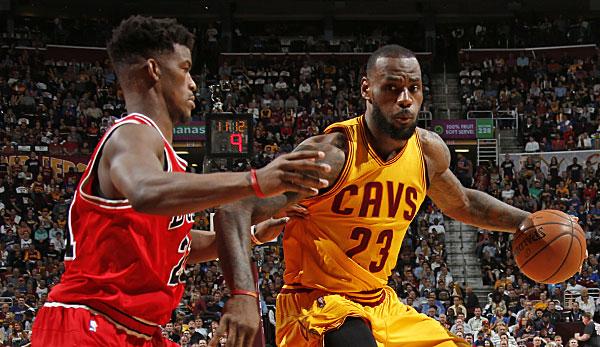US-Sport
NBA: Theme week: The search for the Holy Grail
The SPOX theme week “Analytics” ends with the search for the Holy Grail of Advanced Stats: a metric that can measure the value of an NBA player in a single number.Player Efficiency Rating (PER), Regularized Adjusted Plus-Minus (RAPM), Box Plus-Minus (BPM) and Real Plus-Minus (RPM) – What do all these figures mean and what are their weaknesses?
In the words of its creator John Hollinger, the Player Efficiency Rating (PER) is a statistic that summarizes “all the positive contributions of a player who deducts negative ones and thus allows for an assessment of his or her performance per minute” Since its introduction over ten years ago, PER has probably been the most frequently cited deposit metric in reporting on the NBA.
It combines a player’s boxed score numbers – points, rebounds, assists blocks, steals, misses, turnovers and fouls – into a single value using different weightings.This is also normalized for minutes and pace to make the performances of all current and former players comparable.
The PER-value of a completely “average” player is 15 for each season.The “best” players of the league reach values of over 25, a PER of less than 10 is considered catastrophic.Wilt “the Stilt” Chamberlain (1962/63) achieved the highest PER in NBA history, followed by LeBron James (2008/09) and Michael Jordan (1987/88), and last season MVP Russell Westbrook led the league with a score of 30.6.
John Hollinger’s metrics are comparable with the Eye Test at first glance, and the biggest stars occupy the top positions of his rankings year after year.Nevertheless, the Player Efficiency Rating suffers from some obvious weaknesses.The name is misleading, because instead of efficiency the productivity of players is measured.In short: Whoever fills the boxing score will be rewarded.
This mainly affects dominant scorers.Their value is not so much driven up by particularly good throwing rates, but rather by as many casting attempts as possible, since successful throws are weighted much more strongly than failed attempts.Accordingly, last season’s top 25 players include JaVale McGee, Enes Kanter and Rudy Gobert, with a Usage Percentage of less than 25 percent.
The name Enes Kanter also highlights the second weakness of the Player Efficiency Rating.It puts more emphasis on the offensive, while good defenders are often undervalued.While the Big Man of the Oklahoma City Thunder finished 19th in 2016/17 with a PER of 23.7 ligaewide, Defensive Player of the Year Draymond Green (PER: 16.5) shared 96th place with Steven Adams.
The reason for this is obvious: the defensive performance in the boxing score is represented exclusively by rebounds, blocks and steals.While players like Hassan Whiteside (22.7), Andre Drummond (20.9) and Kenneth Faried (20.4) have clearly above-average PER scores in these categories despite their limited offensive talents, the many small (and larger) things that make Green one of the NBA’s best defenders and players are simply overlooked.
In addition, Hollinger is accused of arbitrarily “screwing on the factors” until Michael Jordan was first in the SPOX interview with Jeremias Engelmann.Nevertheless, the attempt to compare players from different teams and eras using a single metric was an important step in the evolution of analytics.The search for a better way to evaluate players and their contribution to team success has meanwhile been a source of numerous (mostly) bright minds at universities, in relevant forums and in the front offices of many NBA teams.
Season 2016/17*
NBA history*
# #
players
PER
squad
season
1
Russell Westbrook
30.6
Wilt Chamberlain
SFW
1962/63
31.8 31.8
2
Kevin Durant
27.6
PHW
1961/62
31.7
3
Kawhi Leonard
LeBron James
CLE
2008/09
4
Anthony Davis
27.5 million
Michael Jordan
CHI
1987/88
5
James Harden
27.4
1963/64
31.6
6
27
MIA
2012/13
7
Isaiah Thomas
26.5
1990/91
8
Nikola Jokic
26.3
Stephen Curry
GSV
2015/16
31.5 31.5
9
Chris Paul
26.2
1989/90
31.2 31.2
10
Giannis Antetokounmpo
26.1
2009/10
31.1
Players with at least 1000 minutes played
The exact formula for calculating the PER can be found on basketball-reference. com.
Page 1: Player Efficiency Rating: Is this supposed to be efficiency?
Page 2: Plus/Minus and RAPM: Are boxscore stats superfluous?
Page 3: RPM: The “real” plus/minus?


















You must be logged in to post a comment Login